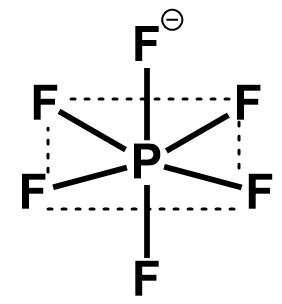Question
Question: What is the geometry and hybridization of \( P{F_6}^ - \) . What orbitals are used to hybridize?...
What is the geometry and hybridization of PF6− . What orbitals are used to hybridize?
Solution
Phosphorus is the central atom in the compound PF6− . There are only five electrons in the outermost shell of the phosphorus atom and the negative charge is placed on the more electronegative atom which is fluorine in this case.
Complete answer:
The ground state electronic configuration of the central phosphorus atom in PF6− is such that there are five electrons in the outermost shell. Two of these electrons are paired and present in the s-orbital. To exhibit a covalency of five or above, the electrons need to be unpaired using the vacant d-orbitals.
The negative charge goes on the fluorine atom as it is more electronegative than phosphorus. Each fluorine atom shares one electron and pairs with the unpaired electron present in the atomic orbitals of phosphorus. The fluoride ion contains eight electrons and simply donates a pair of electrons in the vacant d-orbital of the phosphorus atom. As a result, six atomic orbitals of phosphorus are involved in the formation of PF6− .
The six atomic orbitals undergo mixing to give six equivalent hybrid orbitals with better overlap, lesser energy and more directional character. These six hybrid orbitals arrange themselves in such a manner to create six equivalent positions for all fluorine atoms. The hybrid orbitals are therefore equal in length and mutually perpendicular to each other. Such a geometry is called an octahedral geometry.

⇒ The six atomic orbitals on phosphorus that undergo hybridization are s,px,py,pz,dz2 and dx2−y2 . Thus the hybridization of PF6− is sp3d2 and the geometry is octahedral.
Note:
The structure of PF6− can be compared to SF6 which has an equal number of electrons and undergoes similar hybridization to give an octahedral geometry. The orbitals present in the z - plane are used to form axial orbitals and the remaining orbital forms a square planar geometry in the x−y plane.
